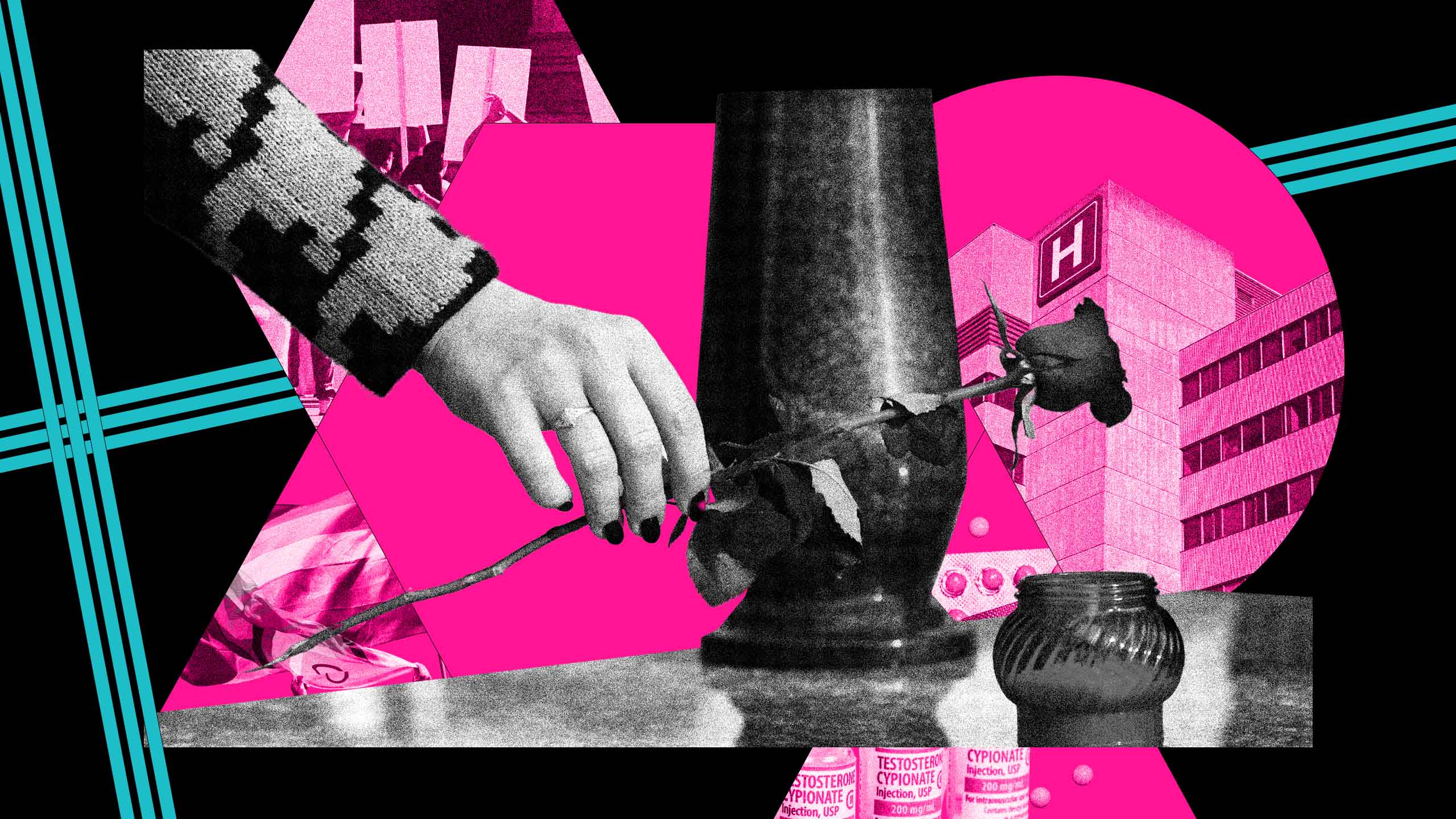
It wasn’t meant to be this way. It’s an absurd idea that feels almost painfully foolish, but it keeps returning to me as I search for the words to begin this piece. It was not meant to be this way. In a world where young lives are lost to hatred and stigma, we shouldn’t be living in 2024. The first time I wrote an essay for a magazine about a murdered transgender youth was over ten years ago, when I was a junior myself, and I suppose a part of me always thought that I’d also be doing it a decade later.
Yet here we are, still grappling with the aftermath and trying to articulate the profound losses in a way that makes sense. How do we mourn people we’ve never met but to whom we feel intimately connected? We’re still wrestling with questions that seem unanswerable. How do we honor the deceased without exploiting their stories? All the while, the clamor of anti-trans moral panic reverberates through social media and political discourse, growing louder and louder around us.
In recent weeks, trans communities have been inundated with deeply distressing news of violence against young people and children. On March 17, a 21-year-old transgender man named Alex Franco was fatally shot in Utah. The district attorney of Tulsa County had previously announced that no charges would be filed in connection to the death of Indigenous non-binary student Nex Benedict, who reportedly died by suicide following a physical altercation with three other youths in a public high school bathroom.
In moments like these, I feel the pull toward familiar narratives, the natural inclination to lean into a worldview built on victims, villains, and the quest for justice. This is the only language that this culture has taught me to derive meaning from tragedy. Innocent victims, irredeemable villains, stricter laws, harsher sentences. Is this truly what I believe? Like many transgender people, I came dangerously close to becoming one of the children who died too young. It’s deeply personal and profoundly tragic. While I understand the temptation to oversimplify, I struggle to believe that it furthers our collective desire for a more just world.
Back in February, the news of Benedict’s death sent shockwaves of grief and outrage through LGBTQ+ communities, following closely on the heels of a trial in the United Kingdom involving the murderers of a 16-year-old transgender girl named Brianna Ghey. The trial revealed the gruesome details of Ghey’s murder, with her attackers stabbing her 28 times with a hunting knife after luring her to a meeting in a park. Each of these horrifying events is a tragic loss in its own right, yet together they have become inseparable from the larger narrative in which trans people find themselves entangled: a cultural panic that scapegoats us and leads to actual violence against us. Trans people, especially trans children and youth, have become a wedge issue exploited by populists and profiteers who understand that the easiest way to rally their supporters is to unite them against a marginalized group.
Xtra, a Canadian publication, is being blocked on Facebook and Instagram as part of Meta’s response to Bill C18. Spread the word.
When Pierre Poilievre, the leader of the Canadian Conservative Party, declared last month that “biological males” (that is, trans women) should not be allowed in public spaces like changing rooms and restrooms designated for women, he exemplified this age-old strategy. So did Oklahoma education superintendent Ryan Walters when he appointed notoriously anti-trans TikTok influencer Chaya Raichik to serve on a media advisory committee for the state school library system—a move that many LGBTQ+ journalists and commentators have highlighted in reporting on Nex Benedict’s death, given that Benedict lived in Oklahoma.
Politicians like Poilievre and Walters undoubtedly understand the benefits of taking such public stances against trans rights: support from a growing and vocal “gender critical” movement that has permeated many conservative and centrist circles. The fight over trans rights may be strategic or ideological, a series of skirmishes within a larger cultural war for those who engage in it.
Yet for the families of trans and gender-diverse children, and for trans people themselves, the impact is profound and deeply personal. We are a community engulfed in collective trauma, surrounded by an unrelenting and seemingly endless debate about trans human rights, and filled with stories of violence, death, and loss.
Since the deaths of Nex Benedict, Alex Franco, and Brianna Ghey, trans people have been associated with violence, premature death, and false accusations of sexual deviance. While it goes without saying that each of these individuals had a unique life story, for many—perhaps most—trans people today, engaging with these stories inevitably brings to mind a host of other, similar tales of friends, loved ones, and community members taken from us too soon. To remember them is to feel the weight of their names like a blow to the gut.
It seems that living as a trans person in 2024, nearly a decade after the so-called “Trans Tipping Point,” still means enduring the reverberations of a collective trauma that mainstream society refuses to acknowledge. If there is a cultural stereotype that trans communities are prone to radical activism and political confrontation, perhaps this is why: We are drowning in the narratives of dead friends and children, and it is psychologically and spiritually unbearable. How could we not demand justice?
Making martyrs out of the dead is frighteningly simple, and turning them into political symbols is how you do it when you are actually people.
In the aftermath of tragedy, it’s natural to call for a world where such events never occur again. Yet, there’s a perplexing and complex aspect to this impulse that causes the activist within me to inwardly recoil.
Turning the deceased into mere political symbols, when they were once living individuals, is alarmingly simplistic. This is especially evident in the case of children who have died under violent circumstances. Conservatives and transphobes often exploit the notion of childhood to push adult agendas; this is a significant element of transphobic and homophobic political campaigns where, for example, sex education or queer literature is banned in the name of “protecting kids.”
As queer and trans writers, we can do better by resisting the urge to turn our deceased youth into martyrs and by acknowledging the complexity of their lives and deaths rather than using them to further our political goals. It’s tempting for queer and trans advocates to project our own life experiences onto young individuals like Benedict, Franco, and Ghey, and understandably so. However, it’s vital that we remember them as individuals with inner lives that most of us can only speculate about. They don’t solely represent the trans rights movement. They were and are much more than that.
Engaging in public mourning and meaning-making requires a commitment to complexity and to recognizing the full humanity of those who suffer, even when their narratives challenge our preferred narratives. For example, some within the queer community have expressed doubt about whether Nex Benedict’s death was a suicide or a result of injuries sustained during the attack. These questions were fueled by ambiguities in the autopsy report, as Benedict’s cause of death was reportedly a lethal combination of antidepressants and antihistamines. Truth matters. We must ask, “Wouldn’t it be equally tragic and worthy of a call for justice either way?” Would our sorrow diminish if it were a suicide? Surely not.
Some may argue that Benedict was driven to suicide due to bullying, a tragic and disturbing possibility that must be considered. Because of our commitment to complexity, we can’t be certain of the answer, and I believe staying in this uncertainty is a way to honor his humanity, as Benedict deserves to be mourned regardless of why he died. The loss of his life, and everything he could have become, is heartbreaking regardless.
Furthermore, it’s crucial to acknowledge that progressive movements may inadvertently call for accountability and protective measures that contradict progressive principles and may actually harm trans children and youth overall. In the wake of Brianna Ghey’s killers being sentenced, the U.K. media has predominantly focused on her mother’s campaign for stricter monitoring of youth social media and cellphone use. As Eli Cugini and Ilya Maude reported for Xtra, such initiatives could potentially be detrimental to trans youth living in abusive households.
How do we reconcile calls for justice for trans youth who face violence, often perpetrated by other youth, with the emotionally charged yet crucial question of whether justice entails criminal charges and prison sentences? I find it hard to believe that it does. According to writer and Xtra columnist Jude Ellison S. Doyle, who recently stated in their newsletter, “Justice doesn’t mean blood, and it doesn’t mean vengeance.” Ensuring that Nex Benedict’s life is valued means doing just that.
What does it mean to make the life of a lost child matter? Firstly, it always matters. Secondly, it means examining the structural factors that contribute to such tragic events, such as under-resourced public schools, lack of universal mental healthcare, and a political system focused on cronyism and divisive culture wars rather than genuine public engagement and the common good.
A queer perspective challenges us to move beyond punitive instincts, asking whether seeking revenge truly serves our goal of breaking the cycle of harm. Does incarceration and expanding the reach of the criminal justice system protect young people from violence? I don’t believe it does, as violence is not a problem for everyone—it’s a systemic issue that requires systemic solutions.
We are not meant to exist in a world like this. It was never intended for Brianna Ghey, Alex Franco, and Nex Benedict to perish. They deserved a better world—and so do all the queer and trans youth who preceded them, all those who are still alive today, and all those yet to come. Let’s strive to build a better world by honoring them.



